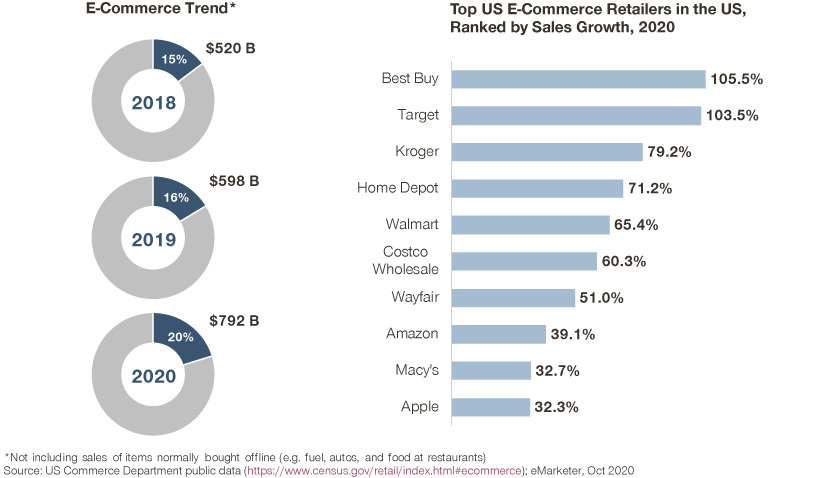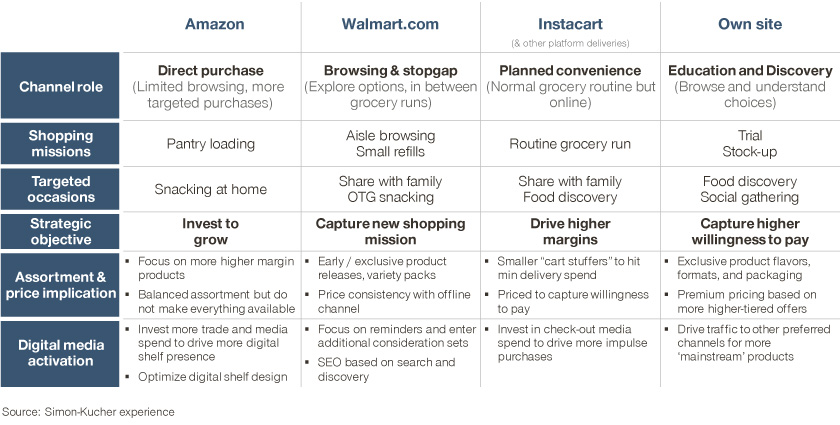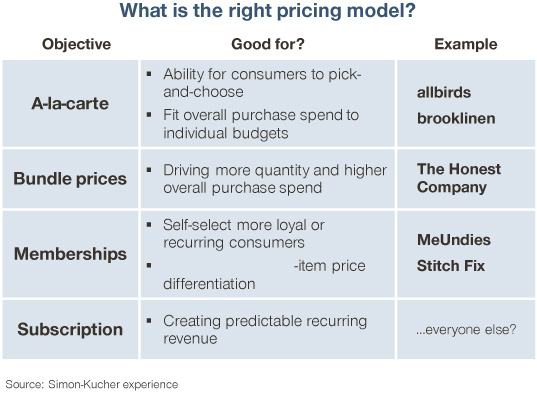Today, building an online presence is a must-have for any brand. Yet, while the internet allows businesses to reach more consumers, it also brings out a different channel mindset from traditional brick-and-mortar. Industry expert Vincent Duong explains how brands can build an eCommerce strategy that can help drive both consideration and conversion.
In 2020, eCommerce saw a record-breaking number of people shopping online, increasing sales by 44 percent year over year. Consumers, stuck at home in quarantine, proved that anything can be bought from the internet. Shoppers have subscribed to and purchased products from all sorts of sectors – from fashion, consumer health, food and beverages, to lifestyle and durables.
Meanwhile, brands quickly rushed to improve their online visibility to stay relevant. Even traditional brick-and-mortar retailers – like Best Buy, Target, Kroger, and Home Depot – drastically expanded their eCommerce capabilities to meet demand.

Gone are the days when brands simply had to contend with who they were sitting next to on the shelf. Now, consumers can easily compare any products they find online, skyrocketing the number of competitors to watch, as well as making it even harder to get discovered and win share of voice. The acceleration of online shopping has now made it a top priority for most consumer brands to really focus on implementing an optimized eCommerce strategy.
The good news is that there are strategic ways for brands to take advantage of the online channel to stay ahead of the curve and remain best in class. Winning online means setting up the right e-commerce foundation, and that means establishing four key building blocks:
1. Understand the roles of different channels
Options for consumers are becoming endless, as they now seamlessly blend their offline and online shopping journeys into one holistic omni-channel experience. When it comes to your brand, all channels play a role in the consumer journey. From traditional offline channels like mass merchants, to the growing convenience channel, and, now, the surge of online touchpoints – such as Amazon, Facebook, TikTok, and even a brand’s own direct-to-consumer website. So, the critical first step in understanding the role of different channels is understanding and mapping the full consumer journey – how they navigate online/offline dynamics, and which critical touchpoints they hit towards the final purchase. Understanding which channels are used for exploration, price comparison, and purchase, is key to developing your strategic objective.

All of this has implications on:
- What you want to be selling in each of these different channels
- How you want to price those products in these different channels
- How you execute your digital strategy
- How you navigate the extreme competitiveness of the online stage
2. Design your portfolio to maximize acquisition and customer lifetime value for online
Once you know the roles for each of your online channels, you also need to understand how your product offering best fits within them. One of the biggest mistakes we see with brands is that they throw all available products in one online channel to take advantage of the near limitless “digital shelf.” However, just because you can offer everything online does not mean you should!
The assortment you offer within a channel that is meant to acquire new consumers should be different than what you offer to those making routine purchases. That means you also need to know how to classify your assortment into particular product roles, and how that matches to your different channel roles. This not only makes your efforts much more targeted, it also makes your Ecommerce SEO, and other digital media costs, work much more efficiently.
In order to determine the assortment role, you need to understand the following:
- What attributes are most important to the consumer?
- How much are they willing to pay?
- How may that vary depending on which stage they are on their journey?
- What particular need or occasion do they wish to fulfil?
3. Match your pricing model to how your target consumer shops you
The online channel gives many brands more flexibility in setting prices, but also in how they can charge consumers. The beauty of selling online is that there are a number of different pricing strategies you can utilize. From a-al-carte, to memberships and subscriptions, the important thing is to tailor your pricing strategy to your customers. Don’t make the mistake of choosing a pricing model based on what may drive your most predictable revenue. Instead, base the model on how consumers actually buy your products or services.
This is how you can tailor your price point and charge your consumers accordingly, in order to drive retention and recurring purchase.

4. Establish a strategic online playbook from acquisition to retention
The last significant building block to winning online is making sure you are proactive in thinking through how best to acquire and retain consumers who drive profitable growth. Establishing a framework that provides guidance across all revenue growth management levers is perhaps one of the most important elements. This framework needs to encompass everything from acquisition, to retention, and value capture across all online channels:
- How do you drive awareness and consideration?
- How do you engage consumers further?
- How do you build loyalty?
- What prices can be set for your products across different channels to retain demand and grow sales?
Keep in mind, “online” is a host of a wide variety of channels. Not only can you utilize Facebook Marketplace and Amazon to sell your products, but you can connect with your consumers through email, text messages, and social media. So, it is important to understand both the roles of these different touchpoints, and how you enter that conversation.
Key Takeaways
Once you have a clear understanding of your consumer journey, and the different roles your online channels and assortment play, you can then determine the right pricing strategy, and develop a strategic playbook that will allow you to implement a successful eCommerce strategy.
In part 2 of this series we will answer some common questions we get asked from consumer brands trying to win online, revealing how brands can start designing these different building blocks.








